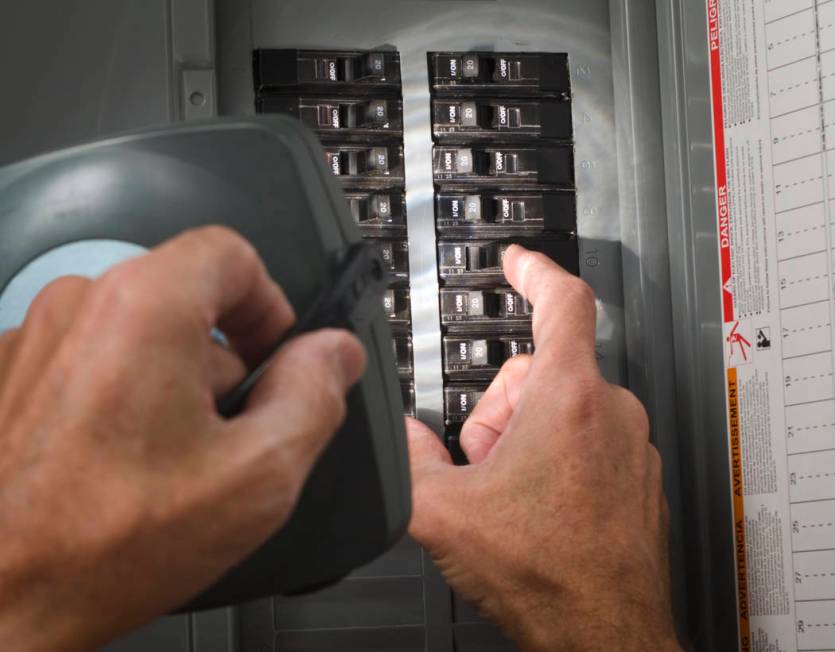Fixing double-tapped circuit breaker is straightforward

Q: We are selling our house, and the new buyers had a home inspector check it out. One of the items he found was in the main electrical panel. He said there are two wires attached to one breaker and that it has to be corrected. How can I do that?
A: You have what is referred to as a “double-tapped” breaker, and the fix is straightforward, but it might make you jittery.
A circuit breaker provides electricity to the individual branch circuits throughout the house. Each branch circuit should be connected to a breaker.
In your case, two branch circuits are connected to one of the breakers. Therefore, you might have a poor connection, which might lead to sparking, heat buildup and a fire.
To repair this, you can add a breaker if there is room in the panel, or you can install a tandem breaker.
Before you start the project, you must prioritize safety first. You will be working inside your main electrical panel, and if you lack experience at this, you might want to call in a professional. Although the job is straightforward, it can be dangerous if safety precautions are not followed.
The main panel has “knockouts” that allow new breakers to be installed. Knockouts are covers that can be removed to add new breakers to the hot bus bar. If you have knockouts left in your panel, then you have room to add a breaker.
Because your panel has been providing power to the circuit in question, you shouldn’t need to test it for the additional draw of electricity. But if you were adding a circuit to supply power to a shed, you would want to test the panel to make sure that it has the capacity to handle the additional draw of electricity.
When you buy a breaker, make sure it is the correct amperage and the correct manufacturer. Panel manufacturers make breakers to fit only their panels. While some breakers will fit different manufacturer’s panels, it’s dangerous to use them because of poor connections, as that could lead to arcing and fire.
The first thing is to shut off the main circuit breaker. That stops the flow of electricity into the branch circuits where you will be working. Then, remove the panel cover by turning the screws at the perimeter.
Test to make sure there is no power at the individual breakers. With the main breaker off and the individual branch circuit breakers on, use a tester and touch one probe to the branch circuit breaker’s set screw and the other probe to the neutral bus bar. No light? Then the power to the branch breaker is off, and it’s safe to start work.
Remember, there is still live power entering the panel, but the main breaker is stopping it from continuing into the individual breakers. Treat the panel as if it were live.
If you are adding a breaker, loosen the set screw enough to remove one of the wires on the double-tapped breaker and then retighten it securely on the remaining single wire.
Now you can install the extra wire into the new breaker and tighten it securely under its set screw. The new breaker will snap into place.
The breaker will have hooks on one side and the contacts on the other. Slide the hooks into the mounting rail and then push down on the other side of the breaker until it snaps into place.
The other option is to install a tandem breaker, also called a slimline or piggyback. A tandem breaker is essentially two breakers that fit into the space of one. The trip levers are smaller, but it has two set screws for two wires.
Pry the old breaker out and swing it out of the mounting rail. Loosen the set screw to free up the wires and insert one wire under each of the setscrews of the new tandem breaker.
Tighten the set screws securely, slip one side of the breaker under the mounting rail and snap the other side into place.
If you installed an additional breaker, you will need to remove the knockout in the panel cover that corresponds to that breaker. You can just twist it out with pliers.
Reinstall the panel cover and turn the main breaker back on followed by the new breaker. Then label the panel to tell which circuit the new breaker covers.
Mike Klimek is a licensed contractor and owner of Las Vegas Handyman. Questions may be sent by email to handymanoflasvegas@msn.com. Or, mail to 4710 W. Dewey Drive, No. 100, Las Vegas, NV 89118. His web address is www.handymanoflasvegas.com.